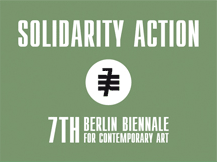In reaction to the disaster of the crisis, the government and the institutions try to privatize anything they can: even the dust from the collapse of the stock markets. As Warhol said: “Rome is an example of what happens when the buildings in a city lasts too long”. This city, today, needs a strong act of re-creation that has to be done with unconventional tools, i.e. not economic and political tools, given their total failure. Re-creation means choosing a creative destruction, profoundly connected with the philosophy of risk. But cultural institutions do not take risks, and once their funding gets cut, today they hasten to cash in on fast-food exhibitions. They play almost the same game as the banks that invest in “useful” material assets, while the essence of art lies in its immateriality and uselessness, which make it a risk but never a failure. In Rome the crisis, as in many other places, has revived a range of alternative solutions, including the increasingly widespread so-called apartment galleries: lofts, flats, rooms where young artists show their work. Many successful critics support this type of initiative. In some cases, the concept of the house coincides with that of the gallery: private space becomes public and vice versa, and art can be experienced on an everyday basis, getting in touch with professionals, curious viewers and simple passers-by.
AURONDA SCALERA
Artist and the founder of the Wo-ma’n home gallery, Rome.


